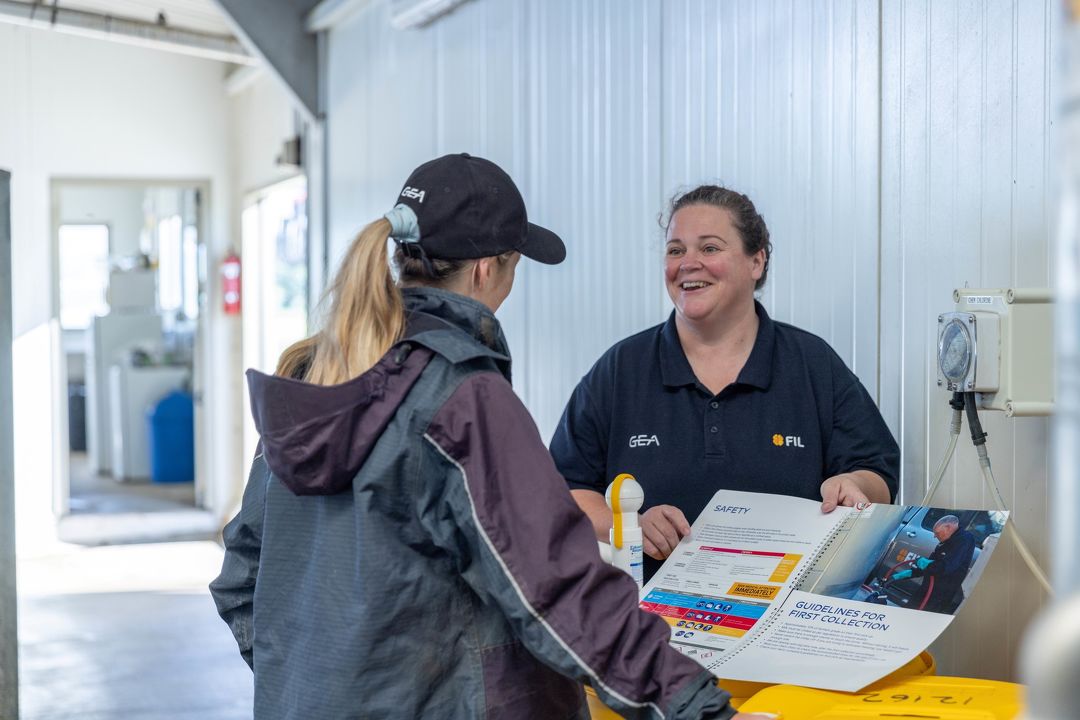Milking plant start up
1 Jul 2025

There are several procedures around the milking plant that can be done to help kick off the season grade free. We recommend using any down time before calving to identify any issues in the milking plant and rectify these before the demands of spring arrive.
Here’s some valuable tips for identifying potential problems before they cause grades in the early milk consignments of spring.
Key areas for a winter plant check:
Milking Plant
• Check that the sanitary trap, receiving can, pulsator line are clean. Milk residue can often build up as a result of plant flooding throughout the season.
• Replace all liners if they have exceeded 2,500 milkings. Any joiners, seals and elbows will require replacement every second season.
• Check and replace cracked or perished jetters and check rate of flow and turbulence through the plant system.
Milk Room
• Check vacuum pump and replenish oil if required.
• Check the milk filter, replacing rubber bungs and seals if you find they are worn.
• Check the inlet and outlet of the plate cooler with a torch to check for any hair and debris. The entry to the plate cooler should be free from any blockages.
• Check seals and joiners from the plater cooler to the bulk milk silo.
Bulk Milk Silo
40% of grades occur here yet can be easily avoided with a pre-season inspection.
• A common area for build-up is the milk silo. Do a visual check of the silo walls, looking for protein build-up that will appear as a bluish rainbow colour.
• Make sure the spray ball is inspected for blockages and grit.
• The silo paddle may require scrubbing.
• Remove outlet tap and check for any protein build-up around the seals. The seals may require replacement.
• The three-way tap and non-return valve at the inlet to the vat may need checking. Check for perished seals and build-up.
• Check your milk vat monitoring system is plugged in.
• Make sure the first milking into the vat reaches the stirrer for effective milk cooling.
• Check your processing company’s guidelines on the volume required on the first pick-up for the size of vat you have.
Milk Cooling
• Many refrigeration units lose gas over the winter and although they run, they may not chill milk to under 7°C. As soon as the temperature rises, so does the bacteria growth.
• To check your unit is running efficiently, fill the silo with enough water to cover the stirrer then run the unit and ensure the water is chilled to under 7°C within three hours.
Plant wash
• Turn on the hot water cylinder before the first milking to check it is working. Check there is sufficient hot water and temperature reaches 80-85°C.
• When a hot wash is going through, walk around the plant listening for air leaks around jetters and jetter airline joins.
• Start washing the plant properly five days out from the first milking going into the vat with FIL Quantum Powder alkali and FIL C3 chlorine. Do a strong alkali wash the milking before the milk goes into the vat.
• Do not collect any more than four milkings into the vat for your first pick up. We recommend only collecting three.
Staff training
• Have you got new staff or do your current staff need a refresher? Using any down time before the season really kicks off is a great time to ensure new or current staff are well trained, familiar with the plant and milking procedures.
• Ensure your staff understand the importance of good hygiene and the resulting penalties if the standards are not met.
• Get in touch with your local FIL Area Manager for training on chemical safety, mixing and dilution rates, teat spray application and plant wash procedures.
If you have any questions, get in touch with your local Area Manager
Back...
